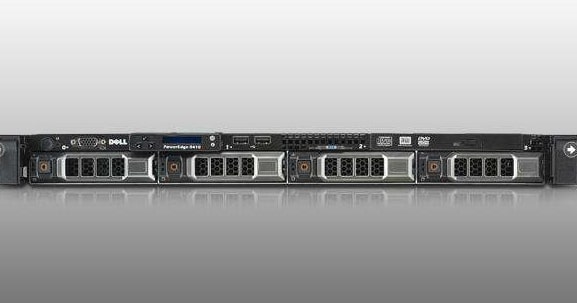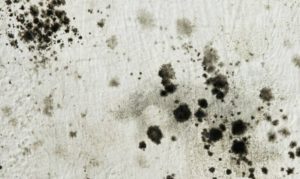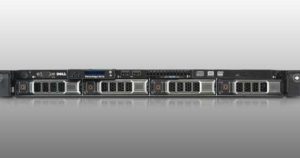
Dust can be said to be the enemy of the computer room. If you do not pay attention to dust removal measures in the computer room all over the server, no matter how good the server or network equipment will be.
First, the harm of dust to the machine room
Since current network devices and servers generate a lot of heat during operation, in order to dissipate this heat, heat is usually dissipated by active heat dissipation. Due to the small space of the equipment room, these devices are usually air-cooled. Cooling, venting holes and convection air, very efficient to bring dust into the interior of the device. In addition, some equipment generates high voltage and static electricity when working, which will attract dust from the air.
Dust can carry moisture and corrosive substances into the interior of the device. Covering the electronic components can cause the heat dissipation capability of the electronic components to decrease, and a large amount of heat accumulated for a long period of time may result in unstable operation of the device.
In addition, due to the moisture and corrosive substances contained in the dust, the insulation resistance between adjacent printed lines may be reduced, or even short-circuited, which may affect the normal operation of the circuit, and may even burn out the power supply, the main board, and other equipment components. Conversely, excessive dry dust will enter the device and will provide good insulation, which will directly lead to poor contact between the connector contacts. When it falls into the equipment containing mechanical structure, it will increase the frictional resistance of the equipment movement, and the lighter will accelerate the wear of the equipment. The weight will directly cause the equipment to be stuck and damaged. The most outstanding performance is the mechanical movement equipment and sealing. Poor tape drives and floppy drives.
Dust can be said to be the enemy of the computer room. If you do not pay attention to dust removal measures in the computer room all over the server, no matter how good the server or network equipment will be.
Second, how to prevent dust generation
1. The way to produce dust is:
● The air conditioning system used to maintain the temperature and humidity of the entire equipment room environment will inevitably bring some dust into the equipment room;
● During the maintenance of the equipment room, personnel entering and leaving will bring some dust into the equipment room.
● The dust generated by the building itself, the doors and windows of the equipment room (especially the ordinary room without dust treatment) easily flow into a large amount of dust. The aging of the machine room itself, such as the dust formed by the peeling of the skin on the surface of the wall, the ground, the ceiling, etc.;
● dust generated by the equipment in the equipment room, such as paper dust and toner particles generated during operation of the printer;
● The equipment room is in a negative pressure environment. Most of the equipment rooms are under negative pressure on the outside of the equipment room during the operation. That is, the external air pressure is higher than the air pressure in the equipment room, causing the dust cleanliness in the equipment room to exceed the standard.
2. How to prevent the generation of dust:
● Partition control of the equipment room. For large computer rooms, regional management should be carried out when conditions permit, and equipment that is susceptible to dust interference should be separated from the personnel entering the equipment room as much as possible to reduce the chance of contact with dust. For example, the computer room is divided into three areas, a server host area, a control area, and a data processing terminal area. A special visit channel is set up, and the passage is separated from the main area by a glass curtain wall.
● Regularly check the sealing of the equipment room. Regularly check the doors and windows of the machine room, clean the air conditioning filter system, block the gaps in contact with the outside world, eliminate the source of dust, and keep the air in the machine room clean.
● Maintain the humidity of the equipment room and strictly control the air humidity of the equipment room, that is, ensure that the dust is reduced, and at the same time, the humidity of the air is too large, and the equipment is rusted and short-circuited.
● Strictly control the access of personnel, set up the access control system, and allow people who are not allowed to enter the equipment room to enter the equipment room. The activity area of the personnel entering the equipment room must also be strictly controlled to avoid entering the host area.
●Pre-emptive measures should be taken. The machine room should be equipped with special work clothes and slippers, and cleaned frequently. The personnel entering the equipment room, whether it is the staff of the computer room or other personnel allowed to enter the computer room, must replace the special slippers or use the shoe covers. Minimize the entry of clothing personnel entering the equipment room wearing fiber or other clothing that is prone to static electricity.
●Improve the pressure in the equipment room. It is recommended that the equipment room with positive pressure adopts positive pressure and dust prevention. That is, through a device similar to the air pump barrel, the continuous and continuous input of fresh and filtered air into the computer room increases the air pressure inside the machine room, because the machine room is inside and outside. The pressure difference causes the air in the equipment room to deflate through the gaps of the tightly closed windows, doors, etc., thereby achieving the dustproof effect.
Third, the machine room dust removal skills
Dust is the biggest killer of equipment in the computer room. It is essential to regularly remove dust from the server. Especially in the ordinary storage environment without special planning and processing, a large amount of dust will be deposited in the server after a period of use. We need to clean the server regularly for dust, which is especially important in the summer. In fact, the dust removal method is the same as the ordinary PC dust removal method, but as a system engineering, you also need to pay attention to some techniques.
Preparation before cleaning up
● Set a reasonable dust removal cycle
Set a reasonable dust removal cycle according to the specific conditions of the equipment room, and clean them separately according to the internal parts of the equipment room, the exterior of the equipment room, and the internal parts of the equipment room. Take a medium-sized campus computer room as an example. The internal hygiene of the equipment room should be cleaned every three days, and thoroughly cleaned every half-month; the outside of the machine room is cleaned every day; the dust adsorption of the equipment is checked every week, and the equipment necessary for cleaning is monthly. Carry out a cleaning; every two years, the equipment room and the machine room are repaired according to the actual use, and the machine room and equipment are overhauled every five years.
● Beware of static hazards
When disassembling and cleaning the equipment, first of all, it is necessary to avoid damage to the equipment caused by personnel charging. Before cleaning, you should wear anti-static clothing and wear equipment such as a static ring. Avoid disassembling the power, that is, it must be done with complete power failure and good server grounding, even for hot-swappable devices to prevent static damage to the equipment. For devices such as monitors, the discharge should be done first.
●Understand the device structure
Since the equipment room is from different manufacturers, the design is different. In particular, many brand server chassis is designed to be special and need special tools or organs to open. When unloading the cover, you need to carefully read the manual and do not force disassembly.
●Selection of cleaning tools
The cleaning of the equipment does not require complicated tools. For general dust removal maintenance, you only need to prepare a Phillips screwdriver, a flat-blade screwdriver, a paintbrush or a paint brush. Do not use a brush that is easy to remove hair, such as a normal brush. Hairdryer, anhydrous alcohol, heat-dissipating silicone oil, cotton wool ball, clock driver, tweezers, leather tiger. For simple maintenance, you need needle-nosed pliers, a test pencil multimeter and other equipment.
Particular attention should be paid to the internal dust removal of the power supply.
2. Cleaning requirements for key components
●Mainboard cleaning
As the basic hardware of the entire device, the dust accumulated on the main board is the most likely to cause problems, and it is also the easiest to collect a large amount of dust. First, remove all the connectors, and unplug the devices to number them to prevent confusion. Remove the screws that secure the motherboard, remove the motherboard, and use a wool brush to remove dust from all parts. The force must always be in case of knocking off the patch components on the surface of the motherboard or causing the components to loosen and cause solder joints. Excessive dust can be cleaned with absolute alcohol. Special protection should be provided for the temperature measuring component (thermistor) on the main board, such as blocking it with an obstruction in advance to avoid damage to these components and cause a protective fault on the main board. If the slot on the motherboard is too much, you can use a leather tiger or a hair dryer to clean it. If there is oxidation, use a paper with a certain hardness and insert it into the slot to wipe it back and forth (the surface is smooth and facing outward).
●Interposer processing
The surface of the connector can be cleaned in the same way as the motherboard is cleaned. The plugging part is oxidized. You can use the rubber to carefully clean the gold finger. After inserting it back into the motherboard, use hot melt adhesive to fill the gap on both sides of the slot. To prevent the entry and oxidation of dust during use.
●Fan cleaning
The inner and outer blades of the fan are usually very dusty. We can use the brush to rub the ash on the blade with the brush, and then wipe the inside of the fan and fan frame with a damp cloth. It is also possible to add some lubricant to its shaft to improve its performance and reduce noise. The specific refueling method is to open the oil block and see the fan shaft. Turn the blade by hand and drop a little oil into the shaft to make it fully penetrate. If the oil is not too much, it will absorb more dust. Finally, put on the oil block.
Heatsink cleaning For the structure where the fan and the heat sink can be separated, the heat sink can be removed and thoroughly cleaned with water. The dust can be cleaned with a soft brush and a blown balloon. For the non-separable heat sink, hard hair can be used. Brush the dust in the gap and use the blower to blow dust. After cleaning, the heat sink must be thoroughly dried and then replaced. When reinstalling the heat sink, it is recommended to apply the proper amount of thermal grease to enhance thermal conductivity.
●The surface of the cabinet is clean
For dust on the inner surface of the chassis, wipe it with a wrung wet cloth. Note that the damp cloth should be as dry as possible to avoid residual water stains. It should be blown dry with a hair dryer after wiping.
●Peripheral plug and socket cleaning
For these peripheral sockets, the floating soil is generally removed with a brush and then cleaned with a hair dryer. If there is oil, use a cotton wool ball with absolute alcohol to remove it. A cleaning agent can also be used, but the cleaning agent needs to be neutral, and the acidity will corrode the equipment. And the odor of the cleaning agent must be good.
●Power supply
It is a device that is very easy to accumulate and is heavily affected by temperature. When disassembling the power supply, be sure to pay attention to the internal high voltage. If you do not have certain professional knowledge, do not open it yourself. If you do not disassemble, you can use a hair dryer to block the dust from the power inlet. Clean the fan blades with a stiff brush across the fan filter.
●Other considerations
Some devices do not allow the user to disassemble by themselves, otherwise, the warranty will be lost. Please contact the equipment manufacturer for confirmation before disassembly; all parts should be handled with care, especially the hard disk, and should not be bumped; the upper screws should be tight and appropriate. The insulation pad on the part pad; after the dust maintenance is completed, reinstall the hardware into the chassis and connect the cable and the power supply. If the chassis is not covered, try running the system first to see if the fans are running normally. Check whether the plug is not secure or Abnormal sound.
Although dust cannot be completely eliminated in the machine room, maintaining a good computer room environment can greatly reduce the trouble caused by dust, so daily dustproof is the top priority.

